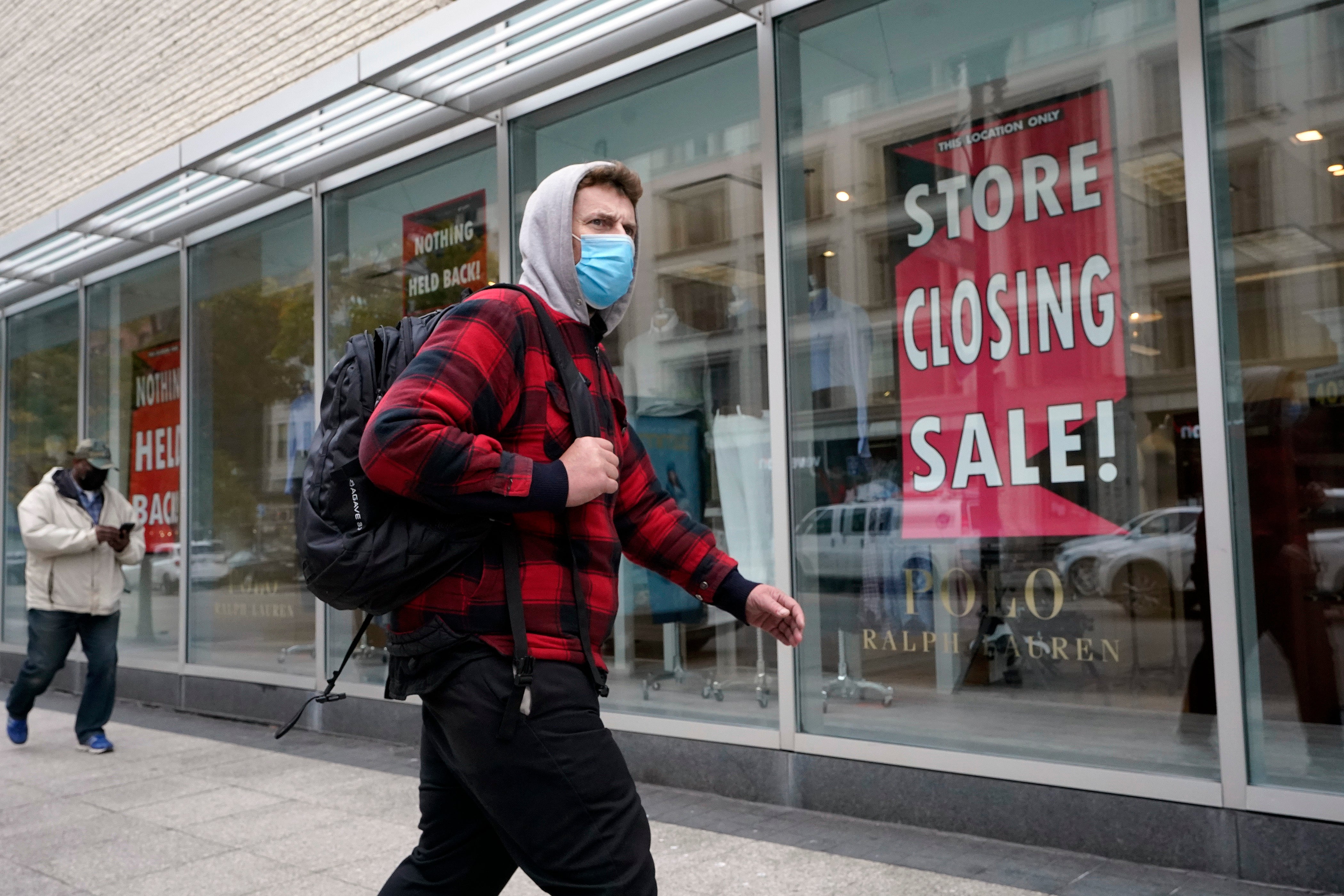Blowout US economic growth in summer is already fading
Americans may feel whiplashed by a report Thursday on the economy’s growth this summer, when an explosive rebound followed an epic collapse

Your support helps us to tell the story
From reproductive rights to climate change to Big Tech, The Independent is on the ground when the story is developing. Whether it's investigating the financials of Elon Musk's pro-Trump PAC or producing our latest documentary, 'The A Word', which shines a light on the American women fighting for reproductive rights, we know how important it is to parse out the facts from the messaging.
At such a critical moment in US history, we need reporters on the ground. Your donation allows us to keep sending journalists to speak to both sides of the story.
The Independent is trusted by Americans across the entire political spectrum. And unlike many other quality news outlets, we choose not to lock Americans out of our reporting and analysis with paywalls. We believe quality journalism should be available to everyone, paid for by those who can afford it.
Your support makes all the difference.Americans may feel whiplashed by a report Thursday on the economy s growth this summer, when an explosive rebound followed an epic collapse.
The government will likely estimate that the economy grew faster on an annualized basis last quarter than in any such period since record-keeping began in 1947.
Just be forewarned: The sizzling pace won't last.
The economy is weakening and facing renewed threats. Confirmed viral cases are surging. Hiring has sagged. Government stimulus has run out. And even last quarter's outsize growth will leave the economy far below its level before the pandemic struck in March.
“The strength of this figure is an optical illusion,” Nancy Vanden Houten, an economist at Oxford Economics, wrote in a research note. “Growth has since slowed, and we expect markedly weaker activity” in the October-December quarter and beyond
In the last major report on the U.S. economy before Election Day, economists have forecast that growth in the July-September quarter soared to a 31% annual rate, according to data provider FactSet. That would follow a plunge of 31.4% in the April-June period — by far the worst quarterly drop ever — when the eruption of the coronavirus closed businesses and threw tens of millions out of work.
If the analysts' outlook proves roughly accurate, the economy, as of last quarter, will have recovered only a bit more than two-thirds of the output it lost to the pandemic recession. The economy shrank 5% in the first three months of the year.
Mathematically, a bounce-back that equals or even slightly exceeds an earlier drop doesn't mean the economy has fully recovered. The reason is that the rebound comes off a smaller numerical base. To use a simple example: A drop from 100 to 70 is a 30% fall. Yet a 30% rebound from 70 gets you only back to 91. You'd need a 43% gain to get back to 100.
There are deeper reasons, too, for viewing Thursday's report on gross domestic product with skepticism. It reflects huge gains last quarter that resulted from simply reopening many businesses after the virus had paralyzed the economy in March and April.
Since August, the economic outlook has darkened as hiring has slowed. Consumers may spend warily during winter. And if the rise in COVID cases were to cause widespread business shutdowns or restrictions, the economy would struggle to sustain a solid recovery. Economists at Goldman Sachs have already slashed their growth forecast for the fourth quarter to a 3% annual rate from 6%.
The seven-day rolling average for confirmed new cases in the U.S. soared over the past two weeks from 51,161 to 71,832, according to Johns Hopkins University data, and confirmed infections are rising in 47 states.
“The basic reality is that the virus remains out of control, and the risks of social and economic activity are maybe even higher than in the spring," said Aaron Sojourner, a labor economist at the University of Minnesota.
Americans are showing growing concern about the economy. Consumer confidence slipped in October after having risen sharply in September. Consumers' outlook for the economy over the next six months fell particularly hard, according to the Conference Board, a business research group.
“There is little to suggest that consumers foresee the economy gaining momentum in the final months of 2020, especially with COVID-19 cases on the rise and unemployment still high," said Lynn Franco, the board's senior director of economic indicators.
The unemployment rate is 7.9%, down significantly from 14.7% at the outset of pandemic recession but still historically high. And hiring has slowed sharply, from a peak of 4.8 million in June to 661,000 in September. The economy is still roughly 10.7 million jobs short of recovering all the 22 million jobs that were lost to the pandemic.
“We bounced off the bottom really aggressively, but since then, there is this deceleration,” said Seth Carpenter, chief U.S. economist at UBS. “The big issue is not how big the third quarter rebound is, but how fast is the next phase of the recovery coming?”
Carpenter said he thinks growth is slowing to just a 2.5% annual rate in the current quarter, and that the economy won't return to its pre-pandemic levels of output until late next year or early 2022.
The job market may take longer to fully recover, Carpenter said. Millions have dropped out of the work force and are no longer looking for work, artificially reducing the unemployment rate. They includes many women who have had to leave jobs to care for children now attending school online from home. The proportion of Americans who are either working or looking for work has sunk to 61.4%, the lowest level since 1976.
“That’s the real measure from my perspective as to whether we’re recovered,” Carpenter said.